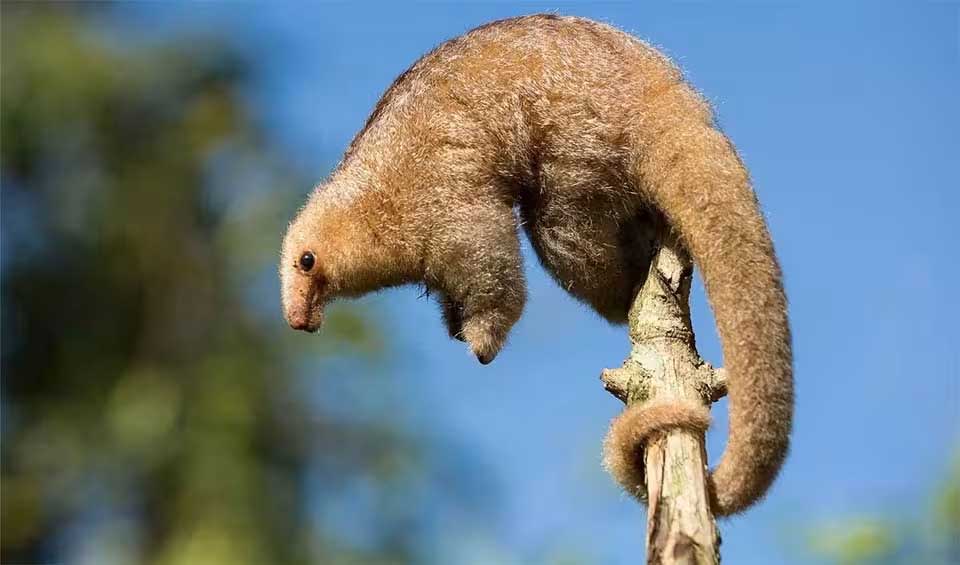Cyclopedidae – Silky Anteater
Also known as pygmy anteaters, they are the smallest and most adorable of their insect-eating kind
Home to the elusive silky anteater or pygmy anteater (Cyclopes didactylus), it encompasses one of the mammalian world’s smallest and most fascinating members. This diminutive creature, often no larger than 20 cm (about 8 inches) in length and weighing less than a pound, leads a secretive life among the treetops of tropical America. Their habitat spans a wide range, from the humid rainforests of the Amazon basin to the dense mangroves and secondary-growth woodlands, where they have adapted perfectly to an arboreal lifestyle.
Silky anteaters are characterized by their distinctive silky, golden fur, which provides excellent camouflage among the tree canopies where they reside. Their nocturnal habits add another layer to their elusive nature, venturing out under the cover of darkness to feed primarily on ants and termites. Equipped with sharp claws and a long, prehensile tail, the silky anteater is perfectly adapted to navigate the complex architecture of the rainforest, moving with agility and precision in search of food.
Despite their small size, silky anteaters are well-equipped for their insectivorous diet. They possess a long, tube-like snout and an even longer, sticky tongue, which they use to lap up insects from tree bark and crevices. This specialized feeding mechanism, coupled with their strong forelimbs and sharp claws, allows them to break into ant nests and termite mounds with remarkable efficiency.
The conservation status of the silky anteater has been relatively stable, with no major threats to their population on a large scale. However, habitat destruction due to deforestation and agricultural expansion poses potential risks to their natural environments. Additionally, the pet trade, although not widespread, contributes to the stress on wild populations, as these animals often do not fare well in captivity, suffering from stress and dietary deficiencies that lead to shortened lifespans.
Genera in this family
Also known as pygmy anteaters, they are the smallest and most adorable of their insect-eating kind

